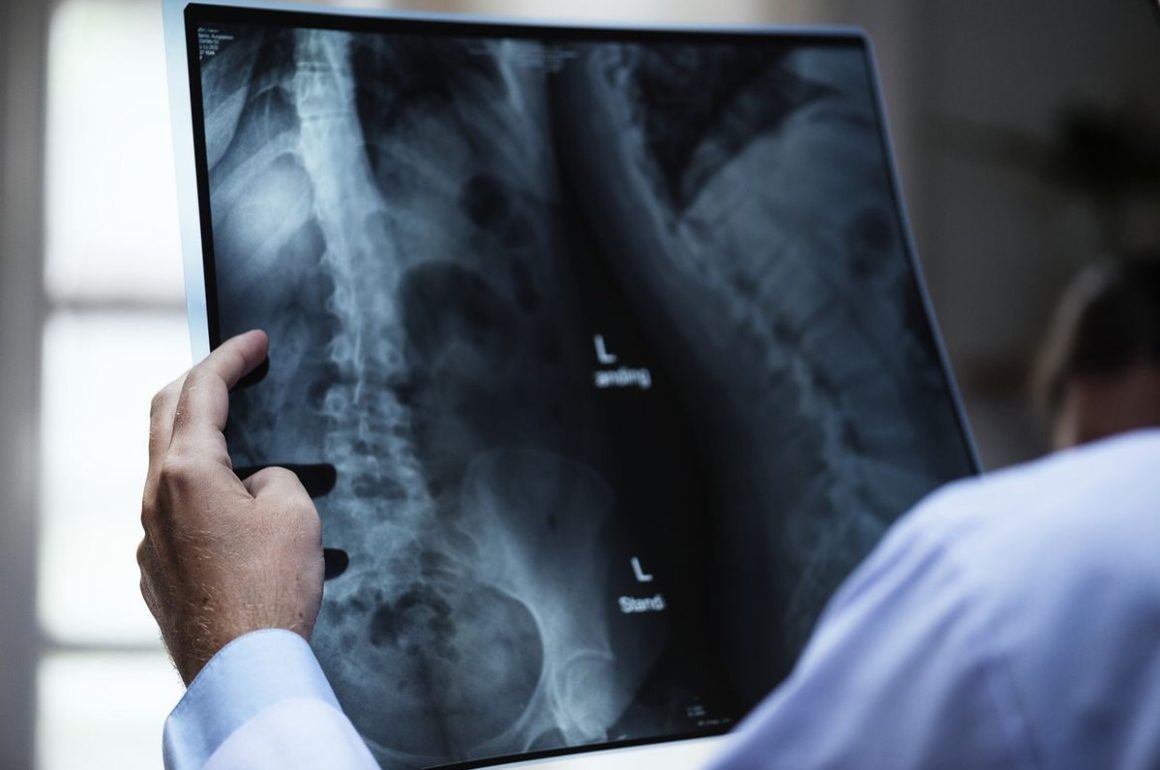To commemorate the six-month anniversary of our blog at Things My Daughter Taught Me, today I am sharing the story of Gabriella’s birth.
In the beginning, there was a prayer: please, God, don’t let people feel sorry for her.
They set her down and, as if made of jelly, she settled onto the table in the operating room. Maybe this was normal. Lisa had warned me not to expect the clean rosy baby that comes to moms on TV. Maybe when they cleaned her up, then she would look more like the videos I had seen at Lamaze, or the infant children of friends and relatives.
This was my daughter, naked under the hot lamps, crying and gagging and contorting her features. This was my daughter.
I looked at her nose, bent as if pressed to the side by an invisible finger. I focused on her feet, still and swollen and mottled like sausages. Five toes – I counted without daring a breath – yes, five, her whole foot turned up until the scraps of toenail touched the calf, the other pointed down in a pirouette. Couldn’t she move it? Purple and pinched, she peered around in terror. My mind added a second intercession: please don’t let me feel sorry for her. I dreaded pity. I dreaded Lisa’s reaction.
*** *** ***
My wife had tried to prepare me for months, but nothing prepared us for that day.
As a physician assistant, as an assistant professor at the medical school, she wanted me to be as ready as she was. We had always shared everything, so I was eager to go to Lamaze training. We did our pre-birth classes over a weekend in Princeton, which I considered fitting because I dreamed of my daughter attending the university (but only if that was her choice, of course). Our instructor taught us hee-hee breathing and how to recognize contractions, and showed us videos of births, both natural and cesarean.
Gabriella would be born by C-section. I felt oddly prepared that morning, if only because I knew the difference between a vaginal birth and a cesarean. It was a gift to know our daughter’s birthday in advance, midway between Lisa’s and mine and a full month before Christmas, long enough to prevent too many “combination-gifts”. Plus, having it predetermined meant not having to worry about a mad ninety-minute scramble home if my wife went into labor during a workday, praying the PATH wouldn’t get stuck on the way to Newark, hoping I would make my connection to the next Northeast Corridor train, fearing I might have trouble getting the car started or navigating the two miles from the station to the hospital in New Brunswick. It all seemed so fortuitous.
That morning arrived. I wolfed down frozen waffles, checked the mommy-bag, and called our parents to let them know we were on our way. Then we left, overcome with hope and quiet.
As the family optimist, I allowed myself a few fantasies. Waltzing with my daughter at her wedding. Snapping photos of her in her first communion dress. Playing with her as a toddling child, tiny now, walking with a bow-legged stumble, sitting in the new four-in-one stroller. I was giddy with anticipation. There comes a time when a person is ready to have children, and if God and nature cooperate, there’s harmony. On that morning, I knew such a sense of wonderment. I had no idea what to expect, but I’d heard the stories of sleepless nights and indescribable bonding, of worrying over money for a college career that wouldn’t begin for twenty years, of an absolute shift in priorities. I was sure it would be amazing.
My wife had similar expectations, but she has always had a more guarded view of life. We had gone to the hospital for an external version ten days earlier and the obstetrical nurse had given us a brochure on breach babies. Lisa noticed a footnote that said 2% or 3% of breach presentations indicate an underlying problem. If I had seen the note at all, I had dismissed it as statistically insignificant. 2% or 3%! Why worry?
We parked in the garage underneath the hospital and made our way to the second floor. My stomach churned, but not ten feet into Labor and Delivery, a nurse greeted us, the same nurse who had been there through the version.
“I was hoping I might have you guys,” she said. “Then when I came in today, I saw your name on the board.”
Lisa said we were glad to see her, too. We adopted her at once as our obstetrics nurse.
“You all recovered from the version?” she said.
That had been something, a dozen onlookers gathered around a birthing bed, doctors and residents and interns and med students (and me), watching a blonde physician use her powerful fingers to knead and twist Lisa’s middle, trying to coax the baby within to leave her upside-down position. Or rather, rightside-up. They had done an ultrasound to confirm she was still breach. Like a newborn kangaroo, Gabriella had spent the last twenty weeks riding head-up in her mommy’s belly. While the doctor worked, I held Lisa’s hand and tried to distract her. It seemed like good practice for a birthing partner, and it made me feel relevant in a room full of medical people. After several minutes, she gave up. Lisa’s obstetrician set Gabriella’s birthday on the calendar, unless she made an unlikely appearance beforehand.
*** *** ***
So there we were, Lisa with an epidural and a modesty sheet, and me standing off to one side as if floating. I saw little beyond the green scrubs and the white sheets and the red numbers on the monitors, colors I would become used to in the years to come.
Muffled voices came from behind masks.
“She’s okay.”
“Everything looks fine.”
“Can’t…breathe.”
“One breath at a time, Lisa,”
“You’re doing fine.”
“Coming…here’s a leg. Got it.”
A leg? I thought that was the whole idea of doing a C-section, that they would get the head out first, before the chest, to make sure she didn’t swallow amniotic fluid before they got the rest of her out. That was what they had told us at Lamaze.
“Other leg. Good.”
I peeked down, skinny purplish legs, just like in the video at Lamaze. The familiarity calmed me. “They’ve got the legs,” I told Lisa. I prayed she wouldn’t ask me why feet-first.
“It’s a baby girl.”
We had known all along, but I swelled within. All those fantasies of weddings and graduations converged. We could do this.
“We’re going to take an arm.”
What about the head? I knew better than to alarm Lisa so remained quiet, sucking on my paper mask.
“This arm’s stuck.”
Stuck?
“Try the other one.”
“One arm’s out.”
“The other one’s still stuck.”
“Go for the head then.”
Yes, go for the head, her chest is out, don’t let her swallow. Please.
“Here we go. And the arm.”
They had her, pulling from under the arms, dripping with blood and fluids. “She’s all out, Li.”
*** *** ***
“Is she okay?” I whispered. I gestured with my chin at my daughter on the table, at her feet, unmoving. I knew they’d say she’s fine, but I needed to hear it.
“Someone’s coming down to look at her,” our favorite obstetrics nurse said gently.
To look at her?
“Is she all right?” Lisa asked. My wife wanted to hear me say it.
I have always hated lying, but I said, “She’s fine.”
“Why isn’t she crying?”
I didn’t know how to respond. Our nurse jumped in. “Sometimes they don’t cry right away.” I could have hugged her.
On cue, Gabriella broke into a breathless sobbing. Eyes shut, I exhaled. Maybe she was crumpled, maybe she’d plump in the open air.
“Is she beautiful?” Lisa said.
Was she beautiful? Of course she was. How was I supposed to know? How could I not know? “She is beautiful.”
“Can I see her?”
“Breathe,” the OB/GYN said. Lisa had trusted him from the time she started seeing him.
“We’ll get her bundled up,” our nurse said. “Do what we have to do, then we’ll bring her to you.”
Please swaddle her with that striped blanket, I thought, my face hot. Warm her, crying now. Cover up those feet so Lisa won’t see them, not yet. (Nothing to do about the nose.)
“What’s her Apgar?” my wife asked.
At that moment, as at so many other times to come, I clung to and regretted her medical knowledge.
“We’re doing it right now.”
I looked at her again. Yes, I decided, she is beautiful. It was a fractious beauty. I discovered her greenhazel eyes, oversized replicas of my own – me, her new daddy with knees buckling – her long lashes, her bowlike lips, miniatures of Lisa’s.
She was ours.
*** *** ***
5 and 8.
Those were her Apgar scores. I learned later that Apgar was an acronym, representing the vital signs they assess one minute after birth and then again after five minutes. Appearance, pulse, grimace, activity and respiration. Five was low, eight was more normal. I just knew something was wrong.
The same reality would pass over Lisa soon after, but I wanted to delay her pain if I couldn’t avert it altogether. My wife, even now being sewn up on the operating table, was a patient, ill-prepared for a shock.
“Stay with her,” she said from the gurney. “I’ll be fine, just stay with her.”
We left Lisa behind in Labor and Delivery, turned at the maternity nursing station, and proceeded past rooms with new mothers and wailing babies, balloons and flowers and grinning guests. The sight of graying grandparents filled me with fresh trepidation.
Our nurse pushed a carriage, a squared-off translucent bin on four long legs ending in wheels. Gabriella lay in the bin, wrapped in a blanket. I hurried along beside them.
We came at last to the nursery. Four or five babies lay swaddled in their trays, some black-haired, some bald. All slept, stirring within their cocoons. They were all like Gabriella in appearance, yet something was different. We entered. The RNs in the nursery unswaddled her, examined her, swabbed her around the blackened umbilical stump that looked like a cinnamon stick. For good luck, someone had told us, bury the stump of a boy under an oak tree, or of a girl under a rose bush. And could we use some good luck.
*** *** ***
Later, I waited with our nurse and Gabriella, back in her bin. I can hardly remember the room, or whether we were alone.
“What should I tell Lisa?” I said. “She’s still a patient herself, right?”
“She did just have major surgery,” our nurse said. “And she’ll be in recovery for a little while.”
I watched the tiny bent-nosed face on the cart, peaceful in sleep. I couldn’t tell Lisa anything, at least not yet. How would I articulate this child’s infirmities? I had no language for the way she looked, or for the way I felt, and I feared her anesthetized mind would distort my words into nameless horrors. Or worse, into Latinate medical names or Anglo-Saxon nicknames. I remembered random words: cirrhosis and scurvy, myocardial infarction and whooping cough, tuberculosis and pinkeye. I would wait until she left recovery and got to her room.
“You want to hold her?” our nurse said.
Y-yes. I lifted her, swaddled now, all blanket and black-haired head. She gazed at me as if she knew me, my voice I guess, all those times calling her through Lisa’s swollen belly, Baaaaaaaaaaby, it’s Daaaaaaaaadeeeeeee! I kissed her cheek. I had never tasted anything softer.
I felt an awesome weight against my shoulder, six-pounds-two-and-one-half. Responsibility? Fear? Loneliness. It was a sensation I would feel in this baby’s presence until I got to know her. After that, I would never again know solitude.
“I love you, Gabriella,” I said to this lump snuggled to my chest, to the chilly air of that room, to nobody in particular and the world at large. Whatever else she was, this tiny person was my daughter.
I stood and held her, I sat and held her. I set her into the translucent bin, I picked her right up again.
There was a rocking chair, and I took it and pulled her to my shoulder. We rocked. Those nights of talking to Lisa’s belly seemed so far away, faced with this real baby. I didn’t know what to do, so I whistled. I don’t remember what, just the comfort of this tiny person propped against me, nestling into my chest. We rocked back and forth. I remembered a temp job from a college summer; I had been loading boxes in a warehouse and whistling when an older man told me I was off-key, then demonstrating his own superior whistle. I hadn’t whistled for a while after that, except when I was by myself. Now I wondered if I was out of tune, but this baby was content.
I’vewhistled to Gabriella for 23 years, most often at bedtime, and she has always loved it, off-key or not. The insult of the man in the warehouse no longer mattered.
*** *** ***
When we accompanied Lisa from Recovery to her room, a nurse wheeling her on a gurney, she asked about our baby. I lied again. (The lying was eating at me.) She wondered why I didn’t look happy. I admitted I was nervous. About becoming a daddy. But I was unable to protect her any longer. I decided I would tell her as soon as we reached her room. I just wasn’t sure how.
I would give her a few minutes to get settled, then tell her. I took a deep breath and followed her.
And found a halo of family around the empty bed.
I accepted congratulations and hugs of joy from Lisa’s parents, and then from her sister, thrilled that her toddler son was about to get a playmate. My courage turned to powder. How could I tell her now, here, in front of everyone?
“I’ll be right back,” I said, but before I could go find our obstetrics nurse, she walked in.
“Would you like to come get your little girl?” she asked me. “Bring her to meet her new family?”
Here was my chance to speak to the only other person that knew what I knew.
“You’re doing fine,” she said as we walked.
“I don’t feel fine.”
“You have a good marriage, I can see that,” she said. “That will help.”
Maybe so, but I felt wretched. I harbored a secret exclusive of my wife, of my in-laws, of my parents who waited ahead peering down into the nursery window. I couldn’t keep it hidden much longer, and that brought a vast relief, but I believe in a proper order. Lisa had the right to know first, before our families. That complicated things.
I also knew this revelation would bring her an unbearable anguish. Aside from the death of her beloved Nonna three years before, I had never seen her beautiful cheeks punctured by pain. Now I was the needle, about to inject her with a grief that would last a lifetime.
*** *** ***
By the time we got back to the room, my guilt turned to terror. Lisa’s aunt and uncle had arrived. And my parents accompanied us.
I can usually tell how I’m feeling by heeding my knees. After untold hours playing basketball in my youth, my knees crack when I crouch, strain when I reach, and throb after I make a presentation at work. That day, the weight of my secret burden made my knees thrum with aching.
Why was I sad? Since that evening I had dared to peek first at the home pregnancy test, finding a plus-sign where there had been only blank dashes, I had wished for a daughter. And here she was. In my arms.
Lisa accepted her baby with tears sparkling her brown eyes. She looked exhausted, weeks and months of expectation and worry taking their toll. But now her face stretched and brightened until round and rosy.
Her mother clasped her hands together with joy, her father wept. Her sister extolled the baby’s virtues. Her aunt said they would straighten out her nose…if it didn’t go back by itself. My dad seemed almost embarrassed at his own emotion.
It was my mom who breathed, “You okay?” For one moment, I wanted to take her into the hall and unburden myself. Then my notion of proper order solidified.
“I’m just tired,” I assured her.
I tried to avoid Lisa’s eyes, but she had heard. She smiled with compassion and squeezed my hand. I clutched back. I could get through this.
After that, time dragged at my fatigue. I searched for a way to tell this welcoming committee that Gabriella looked tired, or needed to nap, or had to go back to the nursery, but I couldn’t even convince myself.
Then Lisa’s aunt said, “I bet they’re adorable, too.”
We had just finished opening gifts, a jacket and accessories imported from Italy. Included was a pair of furry cowboy boots, and now they wanted to see the feet they would warm.
“It’s kind of cold in here,” I dared.
“And she’s all swaddled,” Lisa added. “Why don’t we wait until later?”
Then our nurse appeared in the hall. My wife called thanks for her help and encouragement. I met her at the door. After a moment’s brainstorming, she came in and said, “Why don’t you all give us a little while? It’s time Lisa got her first nursing lesson.”
Relief washed through me. I steadied my balance against the headboard. The family filed out with kisses and hugs.
“Can I stay?” Lisa’s sister said.
“Do you mind waiting outside?” I said, back-pedaling for rationale, afraid I had hurt her. “I wouldn’t really be comfortable being in here if you were, too.”
Lisa looked at me strangely. I shut my eyes. I supposed it wouldn’t be so bad if they learned the truth at the same time, would it?
“It’s okay,” my sister-in-law said. She squeezed my arm, worried about my feelings. She said she had to call her husband, tell him he was an uncle. I thanked her as she left.
It was time.
*** *** ***
“We have something we need to tell you,” our nurse said. She stood on one side of the bed and I was on the other.
“Is she okay?” Lisa said. I’ve always loved her intuition.
My knees grew numb and I sat. I gasped, unable to utter what I’d waited all this time to say.
“She’s okay,” our nurse said. “But she’s going to need a little extra love.”
I leaned in. “Gabriella’s got some–” I said, unable to finish.
“Some slight problems with her feet.”
“She’s still beautiful,” I said, as if that was a consolation.
“Why didn’t you tell me?” Lisa said.
Our nurse said, “Paul thought you should know before the family.”
It was as if she was my translator, but I spoke up as well. “And it was too soon after surgery down in Recovery.”
Lisa unwrapped the blankets and examined Gabriella’s feet with the eyes of a physician assistant, the heart of a mother. Tears filled her eyes. “Is that all, just the feet?” she said.
“We’re having a couple doctors come see her,” our nurse said.
“What kind of doctors?” Lisa asked. She arranged the hospital blanket like green paper around flowers, leaving the baby’s feet exposed. Now I focused, for this was new information for me. “An orthopedist?”
“And maybe a neurologist. Plus, we’ll have a geneticist come by.”
A geneticist?
She continued, “It’s normal to have a genetic consult when there are multiple orthotic problems like this.”
Lisa was crying, hugging our frightened baby. I asked whether she was mad I’d held out on her. “Thank you for telling me first,” she said. I exhaled. I had known she had the same sense of decorum.
The gratitude in her strained smile brought a strange feeling. The fear and embarrassed fortitude that had cohabited in my heart this day took flight, replaced by a momentary peace.
Maybe things would be okay. Maybe okay meant something different than I had ever known.









